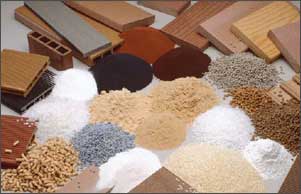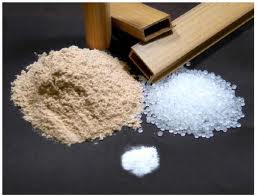Ever heard of plastic wood? It is a composite material consisting of waste wood mixed with plastic. For environmentalists it represents a dilemma. Plastic wood is a substitute for lumber so it conceivably saves trees. But plastic wood during manufacturing is emission intensive when compared to the environmental impact of harvesting natural timber, cutting it and delivering it to your local lumberyard.
In fact, collected data from the Washington State University in Seattle, suggests that greenhouse gas emissions from composites are up to 330% higher than timber harvested from redwood forests for use in decking and other construction. Currently U.S. statistics show that the plastic wood market, around for the last 20 years accounts for 10% of the total market for decking materials and is expected to grow to 32% by 2016.
What are the implications of replacing wood with plastic wood? In an article appearing in the June 5th issue of Nature, the author, Jeff Tollefson, describes how New York’s Coney Island pier is being reconstructed not with wood but recycled plastic wood over steel-reinforced concrete. So what was once a boardwalk made from wooden boards will no longer exist. Instead composite plastic wood will be underfoot.
Plastic wood is most commonly made from high-density polyethylene, polypropylene or polystyrene often recovered from waste. The plastic is combined with wood waste which can be collected from a variety of sources including sawmills and construction sites. The collected wood shavings and splinters are ground into a fine powder and mixed with the plastic. Some plastic wood manufacturers don’t even use wood. Instead they substitute agricultural fibers and in some cases combine them with fiberglass to create a lumber substitute. The market for these products includes automotive parts, pallets, playground equipment, picnic tables and benches, chairs, and substitutes for timber in landscaping, decking, docks and railroad ties.











So what would be the best use for carpentry waste? We live close to an carpentry oriented industrial park and would like to make them suggestions for the use of their waste.
Hi Alejandro, There are a range of uses for carpentry waste from reusing wood scraps to wood shavings and sawdust. With wood scraps the goal is to reprocess the remainders for repurposing. It could be using the wood to create parquet flooring pieces or creating joints to bind larger pieces of wood together. Reprocessing the wood may be cheaper than using new wood sources. Wood shavings and sawdust are a little trickier. I looked at a number of websites that listed gardening for mulch and paths, fire bricks, for cleaning to absorb liquid spills, for stuffing of toys, for dog bedding, and for carpentry repair when mixed with a bonding agent, Hope some of these ideas are possible where you live.